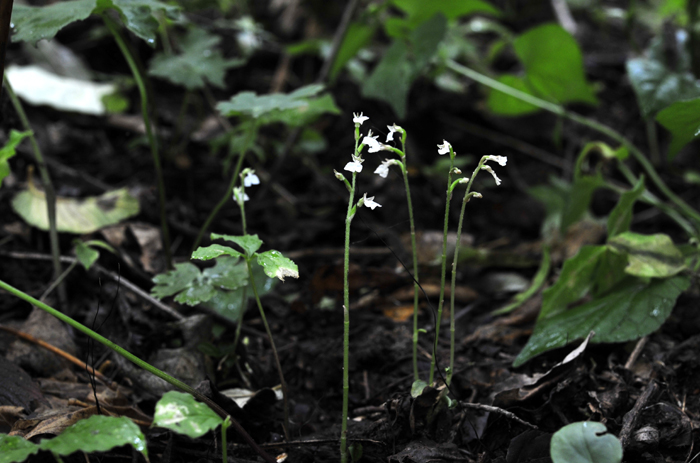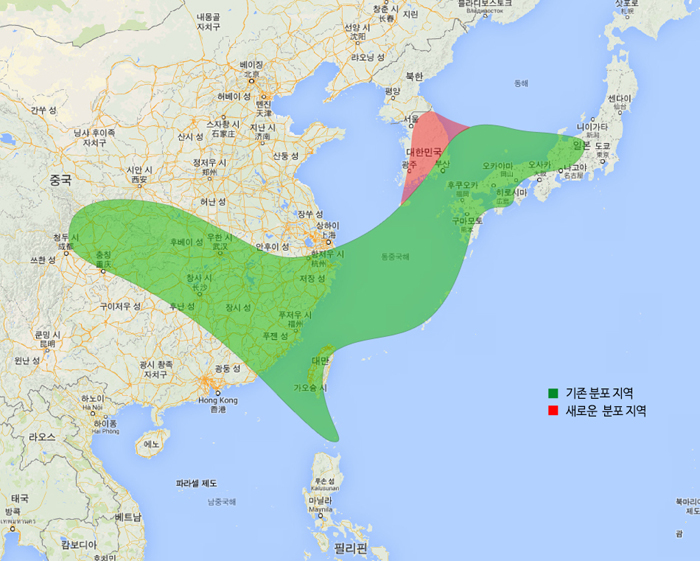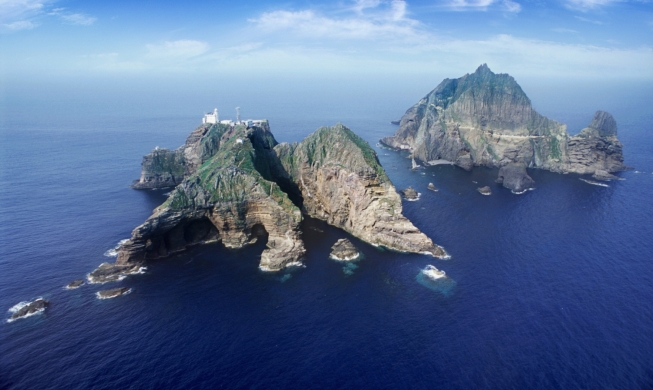A new colony of the endangered Vexillabium yakushimense has been discovered in Yanggu, Gangwon-do (Gangwon Province), in the north central part of the country.
With the discovery, the northernmost habitat of the species has moved up to 38 degrees north latitude, from the previous 36th parallel, on the plant's worldwide distribution map.
The National Institute of Biological Resources (NIBR) confirmed last month that about 40 examples of the plant inhabit the region.

Vexillabium yakushimense is a rare, terrestrial orchid, from 4 to 13 centimeters tall, which grows across East and Southeast Asia, spanning Japan, Korea, China, Thailand and the Philippines. The species usually flourishes in wet areas and bears white flowers between July and August.
According to an investigation into the nationwide distribution of endangered wild plants released by the Ministry of Environment this year, more than 200 examples of the plant grow wild in many parts of Korea, including on the southernmost island of Jeju.
Since the species disappeared in 2003 on Ulleungdo, an island off the east coast, it was believed that the flower's northernmost habitat was in Nagano, Japan, situated at 36 degrees north. The finding of a new population in Gangwon-do, however, has expanded the plant's distributional range northward to 38 degrees north latitude. The region has now become the northernmost natural habitat for the species, both in the world and in Korea.

“The government will continue to work with our neighbors, including Japan and China, to preserve orchids like Vexillabium yakushimense and other plants that grow across East Asia,” said NIBR President Kim Sang-bae.
“We will also work together to study the genetic variation and population-genetic structure of these plants, especially ones on the brink of extinction,” the president added.
(Photos courtesy of the Ministry of Environment)
By Sohn JiAe
Korea.net Staff Writer
jiae5853@korea.kr
With the discovery, the northernmost habitat of the species has moved up to 38 degrees north latitude, from the previous 36th parallel, on the plant's worldwide distribution map.
The National Institute of Biological Resources (NIBR) confirmed last month that about 40 examples of the plant inhabit the region.

A new population of Vexillabium yakushimense has been discovered in the Yanggu region of northern Gangwon-do.
Vexillabium yakushimense is a rare, terrestrial orchid, from 4 to 13 centimeters tall, which grows across East and Southeast Asia, spanning Japan, Korea, China, Thailand and the Philippines. The species usually flourishes in wet areas and bears white flowers between July and August.
According to an investigation into the nationwide distribution of endangered wild plants released by the Ministry of Environment this year, more than 200 examples of the plant grow wild in many parts of Korea, including on the southernmost island of Jeju.
Since the species disappeared in 2003 on Ulleungdo, an island off the east coast, it was believed that the flower's northernmost habitat was in Nagano, Japan, situated at 36 degrees north. The finding of a new population in Gangwon-do, however, has expanded the plant's distributional range northward to 38 degrees north latitude. The region has now become the northernmost natural habitat for the species, both in the world and in Korea.

With the discovery of a new population of Vexillabium yakushimense in the Yanggu region of Gangwon-do, the northernmost habitat of the species has been expanded to territory located at the 38th parallel north (in red), up from the previous 36th parallel (in green), as can be seen in the plant's worldwide distribution map.
“The government will continue to work with our neighbors, including Japan and China, to preserve orchids like Vexillabium yakushimense and other plants that grow across East Asia,” said NIBR President Kim Sang-bae.
“We will also work together to study the genetic variation and population-genetic structure of these plants, especially ones on the brink of extinction,” the president added.
(Photos courtesy of the Ministry of Environment)
By Sohn JiAe
Korea.net Staff Writer
jiae5853@korea.kr
Most popular
- Grammy-winning producer calls Suga of BTS 'amazing artist'
- 'Universal love, family' themes fuel success of 'King of Kings': director
- Council sets minimum hourly wage in 2026 at KRW 10,320
- Expansion of foreign app system raises tourist convenience
- Nat'l population diversity rose nearly 8% from 2018-22: study
